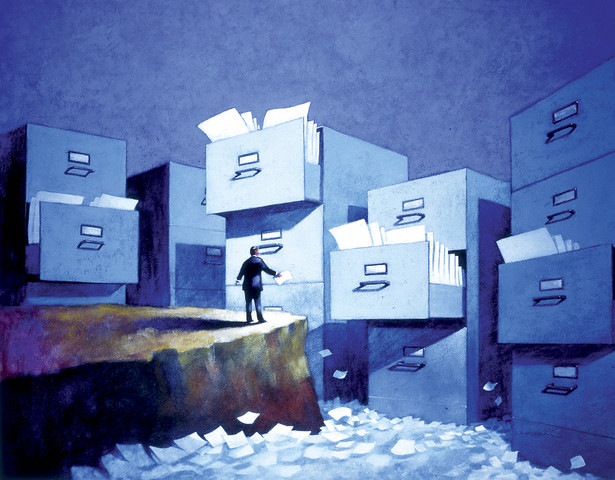
by Gregory Hamel, Demand Media, Houston Chronicle —
Small businesses accumulate various types of data, such as financial information related to revenues and expenses and data about employees, customers and vendors. Traditional file organization describes storing data in paper files, within folders and filing cabinets. Electronic file organization is a common alternative to paper filing; each system has its benefits and drawbacks.
Data Security
Traditional file organization has security advantages over electronic filing, but it also has its disadvantages. Electronic files are usually accessible on a network, which means it’s possible for an unauthorized person to gain access to electronic data over the Internet through hacking methods. Electronic data can also be damaged by software security problems like computer viruses. On the other hand, paper files can be lost in fires and floods, but electronic data is easy to backup in multiple locations, reducing the potential for permanent data loss.
Complexity
Traditional filing systems are less complex than electronic systems, which can make it easier for untrained people to access and manipulate data. Anyone can look through alphabetized filing cabinets to find a file. Locating and manipulating an electronic database information may require technical training, and user error can result in unintended alterations or data loss.
Access Time
One of the primary disadvantages of traditional file systems is the time it takes to access data. It can take minutes if not hours to locate a few files in a large paper filing system. Electronic databases allow for almost instantaneous access to information. Faster data access time can increase the productivity of managers, analysts, accountants and other workers who use data on a regular basis.
Editing and Communication
Traditional file systems are cumbersome in that they do not allow users to easily edit files or send information to others. Paper files often cannot be edited directly, forcing users to make new copies to update old files. To distribute data on paper files, users must mail, fax or scan the data. Databases allow users to edit information fields directly, and because information is stored digitally, it is already in a form that can be easily transmitted.
Order of Data
Data can get out of order in traditional filing systems. If someone accidentally puts a file in the wrong place, or takes a file out of a cabinet and forgets to put it back, it can lead to lost data or the creation of additional copies of files. Electronic filing systems allow users to quickly check whether information already exists somewhere in the system, which helps avoid problems like redundant files and data loss.

